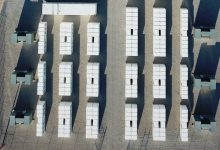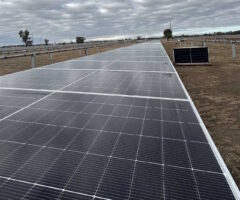Energy market regulators need to increase the speed at which they respond to technological innovation or risk locking new technologies out of the market, findings from one of Australia’s largest integrated renewables and storage projects has shown.
The findings have been detailed in a new report published by Edify Energy, which have outlined the challenges faced by the Gannawarra project in the hope that by making the information publicly available, future projects will face a less challenging regulatory environment.
The Gannawarra project involved the installation of a combined 25MW/50MWh of storage using 400 Tesla PowerPack battery systems, integrated with the existing 50MW Gannawarra solar farm in north-west Victoria.
The project is one of the largest integrated solar energy and battery storage projects in the world, the largest in Australia, and was formally opened in June this year.
The Gannawarra Energy Storage System received financial support from the Victorian government and the Australian Renewable Energy Agency, totalling $25 million.
Edify has published the knowledge sharing report for the project, a condition of its ARENA funding, making the findings and lessons learnt from the project publicly available.
The retrofit approach to energy storage, where shortage is co-located with an existing renewable energy project provides an attractive opportunity to utilise existing grid connection equipment to reduce costs and co-ordinate the supply of power from both storage and renewables
Edify found that this coordination became crucial during a difficult 2019 summer in Victoria, with the battery system supplying electricity during periods of high demand.
“During the high temperature and demand events in Victoria in January 2019, the Gannawara Solar Farm and GESS worked in an integrated manner in very trying climatic conditions to provide electricity when it was most needed by Victorian consumers,” Edify said in a statement.
“The timing of the release of solar power was managed by the battery to coincide with the highest demand periods and demonstrated how the combination of renewables and batteries can provide reliable on-demand power at a time when conventional generators were vulnerable to failure,”
One key lesson the project learnt was that technological change continues to outpace the regulatory response, with Gannawarra finding that the combination of solar and storage required a re-negotiation of Generator Performance Standards.
Edify found this re-negotiation process costly, time consuming and found that it represented a substantial risk to the project has it required a complete re-examination of the role of the Gannawarra project within the energy market.
“This created significant risk for GESS and its likelihood of succeeding as well as adding considerable development time and expense through extensive further grid modelling requirements and negotiations of multiple new agreements,” Edify said in its knowledge sharing report.
However, Edify was overall positive on the potential future deployment of integrated renewable energy and storage projects, and represented an opportunity to maximise the value of network connection infrastructure.
“These learnings highlight that while there is a potentially significant opportunity to retrofit batteries to existing renewable projects to better utilize the sunk cost from network connection infrastructure and expand the options to these projects in managing evolving market risks, the process of executing such arrangement is complex,” Edify said.
Edify said that for market and opportunities for the retrofitting of energy storage systems at existing renewable energy projects to grow, energy market regulators will need to become more responsive to technological change.
Regulators will need to remove the barriers to market entry for retrofitted energy storage systems to streamline the process for future projects.
Note: It should also be noted that the Gannawarra solar has recently had its output curtailed by 50 per cent – along with four other solar farms in Victoria and NSW – due to “system strength” issues newly discovered by AEMO in recent modelling.









